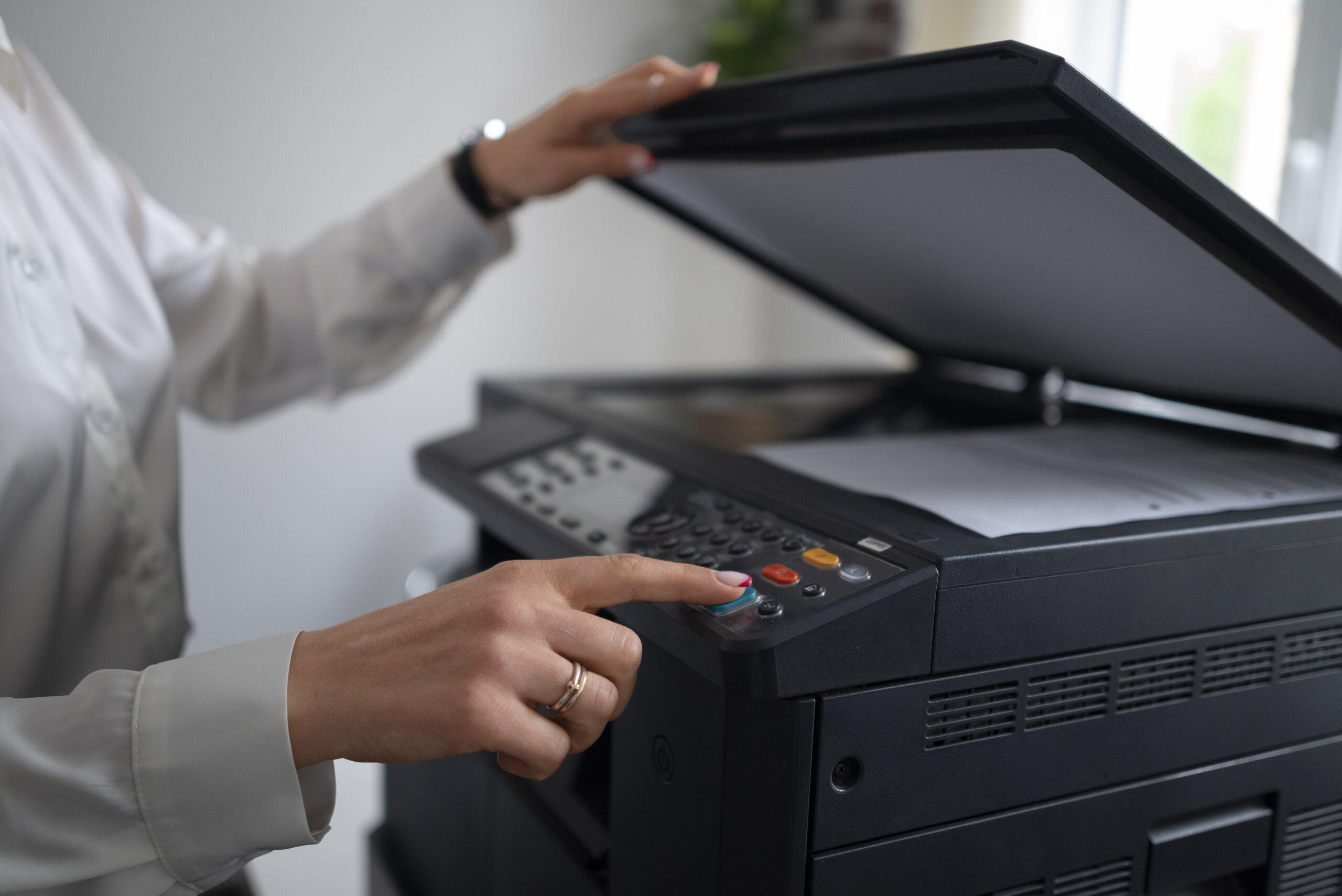Scan to PDF & Email (Windows & macOS) — Step-by-Step + Fixes When Scanning Fails

Scanning to PDF and emailing documents may sound routine, but it often becomes stressful when devices refuse to cooperate. The good news is that you can master this process with a structured approach. This guide covers Windows and macOS methods, direct email from multifunction devices, fixes when scanning fails, and preventive care to avoid future problems. The instructions remain brand-neutral, simple to follow, and work for most home and office devices.
Why scan to PDF & email matters
PDF remains the standard format for sharing, archiving, and printing documents. Unlike raw image files, PDFs preserve layout, fonts, and searchable text. Emailing directly from your device or computer turns paper into a secure digital asset in seconds. For home users, this means fewer lost receipts and tidier records. For small offices, it streamlines workflows: contracts arrive clean, invoices move faster, and filing cabinets no longer dictate storage limits.
Equally important is reliability. Failed scans waste time, frustrate teams, and sometimes compromise deadlines. Understanding the scanning pipeline — glass/platen → software → file conversion → email client — lets you identify where problems occur and fix them systematically.
Step 1 — Prepare for a successful scan
Scanning success starts before pressing the button. A few checks save dozens of wasted attempts:
- Document prep: Remove staples, flatten folds, and keep pages clean. Dust and folds distort scans.
- Scanner surface: Wipe the glass with a lint-free cloth. Smudges appear on every scan.
- Resolution choice: 200–300 dpi is ideal for text. Higher adds file size without visible clarity for most jobs.
- Destination folder: Decide where PDFs will save; cluttered downloads folders cause confusion.
- Email access: If planning to send, confirm your email app or webmail account is signed in.
Step 2 — Scan to PDF on Windows
Windows 10 and 11 provide built-in tools for scanning. If your device is connected and recognised, you can begin immediately. Here are methods:
Method A: Windows Scan App
- Open the Microsoft Store, search for Windows Scan, and install.
- Launch the app, choose your scanner from the list.
- Select File type → PDF.
- Adjust resolution (200 dpi for text, 300 dpi for detailed diagrams).
- Click Scan. Save to your chosen folder.
Method B: Windows Fax & Scan
- Search Windows Fax and Scan in Start menu.
- Click New Scan.
- Pick Profile: Documents → Format: PDF (if option exists, otherwise scan as TIFF then convert).
- Adjust brightness/contrast for clarity.
- Scan and review output in preview pane.
Method C: Device software (brand-neutral)
Many printers install a “Scan Utility.” Even without brand specifics, the process is similar:
- Open the utility, choose “Scan to File.”
- Select PDF, adjust resolution, pick a folder.
- Test with one page before full batch.
| Option | Best for | Limitation |
|---|---|---|
| Windows Scan | Quick jobs, clean interface | No advanced multipage merge |
| Fax & Scan | Legacy support, detailed options | Clunky interface |
| Utility software | Full feature set | Sometimes bloated installers |
Step 3 — Scan to PDF on macOS
macOS integrates scanning tightly into its operating system. You rarely need third-party tools. Here are your main approaches:
Method A: Preview App
- Place your document on the glass or in the feeder.
- Open Preview → File → Import from Scanner or Import from Device.
- Choose PDF as the output format.
- Adjust resolution (200–300 dpi for text, higher for images).
- Click Scan. Save the file when prompted.
Method B: Image Capture
- Open Image Capture from Applications.
- Select your scanner in the left panel.
- Pick “PDF” under Format.
- Choose destination folder and click Scan.
Method C: AirPrint / IPP Scanning
If the printer supports AirPrint, macOS may detect it automatically under Printers & Scanners. Add the device, then scan directly via Image Capture. This avoids additional drivers and is often the most stable method.
| Tool | Strength | Limitation |
|---|---|---|
| Preview | Built-in, simple, supports PDF natively | Basic adjustments only |
| Image Capture | More control over resolution & format | Interface less intuitive for beginners |
| AirPrint/IPP | No driver needed, stable | Requires network-capable printer |
Step 4 — Email your scanned PDFs
Option 1: Directly from printer panel
- Many multifunction printers let you scan and email directly.
- Enter your email settings (SMTP server, port, credentials) via the control panel or web interface.
- Place the document, choose Scan to Email, enter recipient, press start.
Option 2: From your computer
- After scanning to PDF, open your email app (Outlook, Apple Mail, Thunderbird, etc.).
- Attach the PDF and send.
Option 3: Cloud scanning apps
- Some devices integrate with cloud platforms (Google Drive, OneDrive, iCloud).
- You can scan directly into cloud folders and share links instead of emailing attachments.
Step 5 — Fixes when scanning fails
Even with careful preparation, scans sometimes fail. These are common causes and their solutions:
| Symptom | Likely cause | Fix |
|---|---|---|
| Device not detected | USB not seated / Wi-Fi mismatch | Reconnect cable, ensure both on same SSID |
| Blank pages | Dirty glass or feeder misfeed | Clean platen; reload stack |
| Cannot save as PDF | Wrong format chosen | Select PDF in settings; use conversion if needed |
| Email fails | SMTP not configured | Check outgoing mail server details |
| Slow scans | Resolution too high | Reduce to 300 dpi unless photo scanning |
Step 6 — Preventive care for consistent scanning
- Keep glass and rollers dust-free with monthly cleaning.
- Store paper sealed to avoid damp sheets that jam feeders.
- Update firmware quarterly — scanning reliability often improves.
- Use consistent folders for scanned PDFs so retrieval is quick.
Troubleshooting Matrix
| Problem | First Action | Next Step |
|---|---|---|
| Scanner not showing in list | Restart printer & PC | Add manually by IP / reinstall driver |
| Scans cut off edges | Check paper size in settings | Set A4/Letter explicitly |
| Output file too large | Lower dpi to 200 | Use PDF compressor |
| Email sends but not received | Check spam folder | Verify SMTP & attachment size |
| Lines across scans | Dust on glass/feeder slit | Clean carefully with lint-free cloth |
FAQs
What is the best format for archiving scans?
PDF is the most reliable because it preserves layout and text. For photos, JPEG may be smaller but less consistent for documents.
Can I scan multiple pages into one PDF?
Yes. Use the document feeder and ensure “Combine into single PDF” is enabled in the software. Both Windows Scan and Preview on macOS support this.
How do I email directly if my printer lacks a panel option?
Scan to PDF first, then attach via your email client. Alternatively, use cloud-sync folders like OneDrive or iCloud to drop in the file and share a link.
Why are my scans blurry?
Blurry scans come from dirty glass, low resolution, or the lid not fully closed. Always clean and set 200–300 dpi for documents.
Does scanning at higher dpi improve text clarity?
Not usually. Beyond 300 dpi, text does not appear sharper but file sizes grow. Save high dpi for detailed images only.

Guide Axis provides brand-neutral education only. No remote access, repairs, or warranty services.
